Dishwasher error codes

Modern Bosch dishwasher modules are equipped with an intelligent self-diagnosis system, thanks to which the slightest malfunction is alerted by codes that appear on the device display. The error code is a combination of letters and numbers. In order for the user of the dishwasher to clearly understand the problem of failure or breakdown, it is enough to navigate the values of the error combinations.

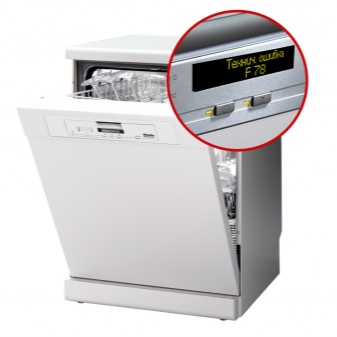
Bosch dishwasher errors
There can be many errors signaling unit malfunctions, since a dishwasher is a household appliance of a complex design with a large number of systems, technologies and sensors.
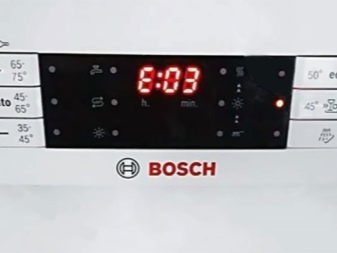
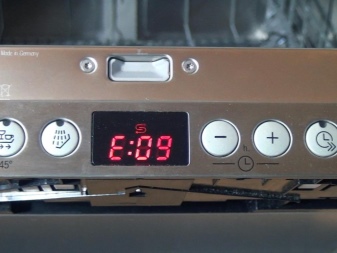
Let's describe the most common codes.
- E1, indicating that the water is not being heated. This can be due to a failure of a heating element, sensor or thermostat.
- E2, signaling a breakdown of the temperature sensor. This code can alternate with the E1 code. For an accurate determination, it is enough to measure the resistance of the temperature sensor contacts using a multimeter. The norm is considered to be 50 kOhm.
- E3, notifying about the insufficient amount of collected water in the allotted period of time. In earlier models, after the appearance of the code, the machine will continue to collect water. You can fix the breakdown by checking if there is sufficient pressure and if there is water in the pipes. Sometimes this happens because the hose is clogged or the filter is clogged. In rare cases, this is a breakdown of the drain pump.
- E4, indicating a malfunction of the flow switch. To eliminate it, it is enough to inspect the switch and its electrical circuits. Sometimes this code indicates that there is a blockage in the sprinkler nozzles that inhibits the normal flow of water. Incorrectly positioned dishes in the hopper can block the sprinklers.
- E15, warning of the leakage sensor actuation. Leaks can occur in the hose, in the connections inside the appliance, in the door seal, in the tank. In addition, the AquaStop sensor may wear out. First of all, you need to check the hoses and filters for blockages, as well as the body for the appearance of corrosive processes (this applies to models that have been working for more than 10 years).
- E24 indicating a water leakage problem. The most common causes are kinks, accumulation of food debris in the hose. Sometimes the sewer is clogged, cleaning of which corrects the situation.
- E27, notifying of voltage surges and problems in the network. This code is encountered when connecting the unit directly. To avoid problems, it is better to connect the device through a voltage stabilizer.
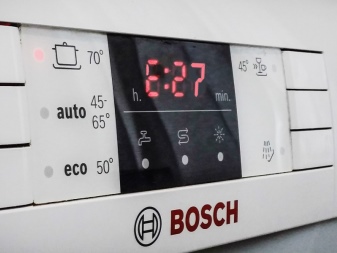
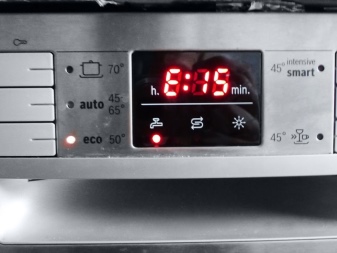
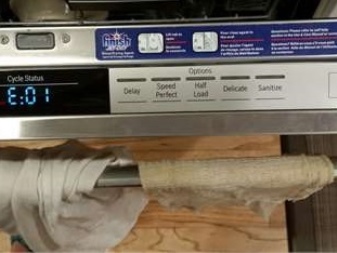

Along with standard error codes, there are combinations of several letters and 2-3 numbers, for example: 2H, h, A5, S3, 4, 8, 16, which will help to determine which a special diagnostic test will help.
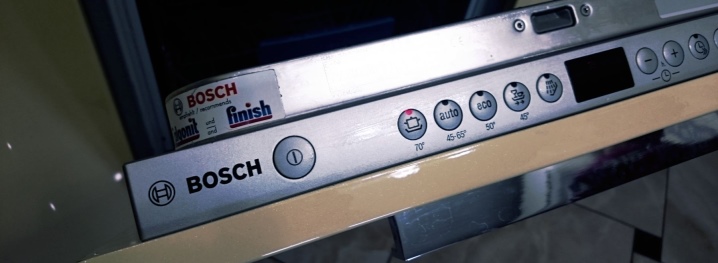
This error coding system is only suitable for dishwasher modules equipped with an LED display.

Electrolux Model Problems
If the error code appears on the display for the first time, then you can simply try to reboot the unit: disconnect from the mains and wait 20-30 minutes, and then start. If, when you turn it on again, the error code appears again, then you need to decipher it in order to understand the essence of the problem. Most often, users are faced with the following code combinations.
- i10 at 1 blink of the indicator, which indicates that water is not entering the dishwasher tank. The cause of such a problem may be trivial contamination of filters or hose.Clearing clogged elements, as well as monitoring the position of the hose, will help eliminate the failure.
- i20 (2), which indicates that it is not possible to drain the dirty water. This is due to a dirty filter, hose or drain pump. It is extremely rare that the cause is a breakdown of the pressure switch, which must be replaced. Thorough cleaning of clogged parts will help to correct the situation.
- i30 (3) indicates an emergency activation of the AquaStop system. This option indicates the presence of water in the unit sump due to a leak. To eliminate the breakage, you need to find the place of leakage (tank, hose connections, gaskets, rubber bands), and then repair it.
- i50 (5) can occur due to a broken pump control triac. The part could fail as a result of a short circuit. To solve the problem, you will need to diagnose the entire electronic board. And then - replacement of the failed elements.
- i60 (6) indicates problems with water heating. The reasons may be a breakdown of the heating element, insufficient water pressure for heating. The solution to the problem will be testing the heating element and replacing it with a new one if necessary.
- i70 (7) indicates a breakdown of the thermistor, which occurred due to a short circuit in the network. In order for the water to reheat to the desired temperature, it is necessary to replace the part.
- i80 (8) indicates incorrect operation of the dishwasher module. Such a breakdown can be eliminated by a specialist, since a re-flashing of the module or the installation of a new board is required.
- i90 (9) is a failure of the electronic board of the dishwasher module, which blocks the operation of the appliance as a whole. A specialist will help you to replace the "brain" of the unit.
- iA0 (10) is a fully interlocked rocker that sprays water into the hopper. Malfunctions can be caused by incorrect placement of dishes in the cooking compartment or blockages. Correct placement of the utensils will help to correct the error.
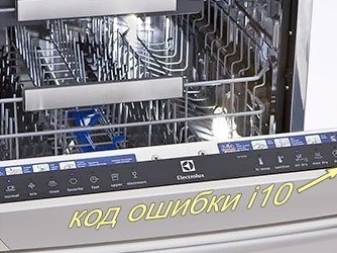
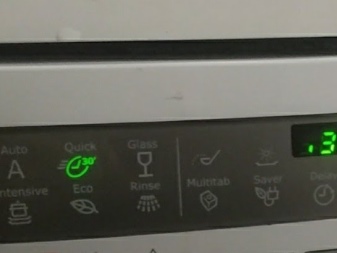
In addition, a little less often, users may encounter such codes on the display as ib0 at 11 blinks - a breakdown of the water turbidity sensor, iC0 (12) - an electronic board needs to be replaced, id0 (13) - a tachometer is out of order and iF0 (14) - exceeding the water intake time.
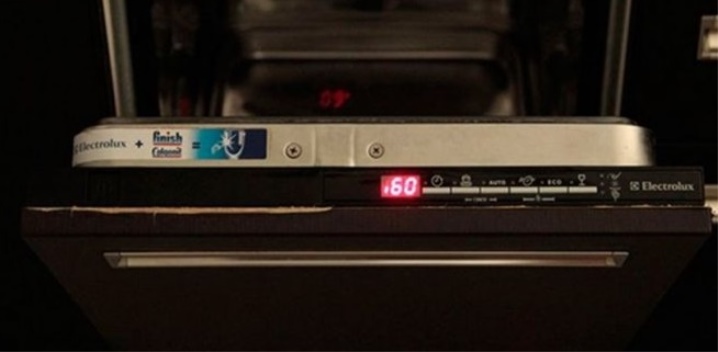
Model codes from other manufacturers
The coding system is used by almost all manufacturers of dishwasher modules, which is convenient for the slightest malfunctions in the operation of the units. Below are the most common error codes found in dishwasher modules of different brands.
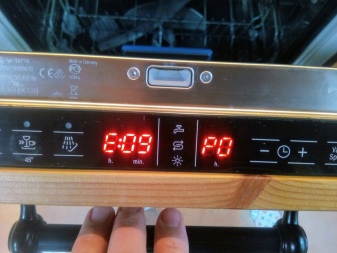
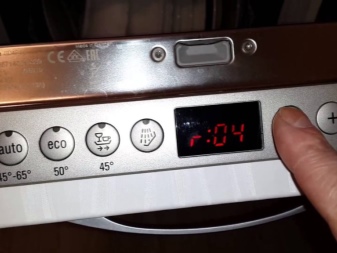
AEG are Italian assembled dishwasher modules, which may display the following error codes on the display.
- i10 and 1 blink - there is no water flow into the machine. The reason is the kink or blockage of the hose, as well as the lack of water in the plumbing system.
- i20 (2) - no automatic draining of water from the chamber. This is a blockage or crushing of the hose, as well as a breakdown of the drain pump or water level sensor.
- i30 (3) - the AquaStop system has been activated, signaling a leak. This is due to the collection of water in the sump, which can be caused by a leaking tank, hose connections, or a broken float sensor.
- i50 (4) - failure of the control system. Most often this happens due to a short circuit in the network.
- i60 (6) - failure in water heating. The temperature sensor or heating element is out of order.
- i70 (7) - short circuit or wiring problems. As a result of a short circuit, the integrity of the contacts is violated.
- i80 (8) - problems with the module firmware. This indicates a failure of the electronic board.
- i90 (9) - communication with the electronic board has been lost. Most likely, the electronic module is defective.

Besides, you may encounter other codes: iA0 10 moment. (the sprinkler does not function), ib0 11 (the turbidity sensor is out of order), iC0 12 (no interaction with the device interface), iAd0 13 (no reaction of the tachogenerator - the water does not heat up) and iF0 14 (low pressure in the water supply).
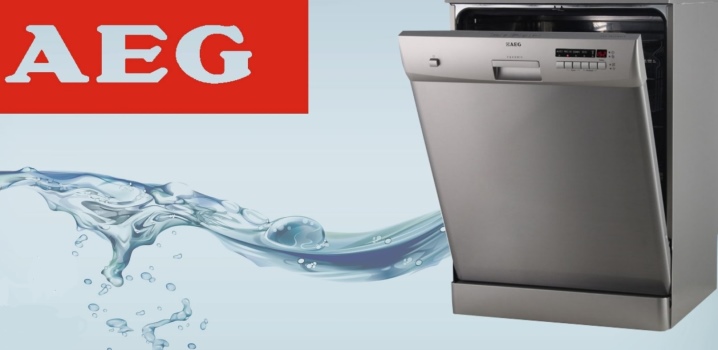
Ardo is an Italian dishwasher with an advanced self-diagnosis system, thanks to which you can understand the essence of the problem and take action.
- E1 - activation of the AquaStop systemwhich indicates a leak. Leaks can occur at hose connections or in the tank body if the device is many years old.
- E3 - enable the protection option. This is due to the excessive flooding of water.
- E4 - water does not heat up. The reason is the failure of the temperature sensor or heating element.
- E5 - no water enters the chamber. This is caused by a blockage or kink in the hose and a possible lack of water in the system.
- E6 - water does not come out of the chamber. The cause was a blockage in the hose or sewer.
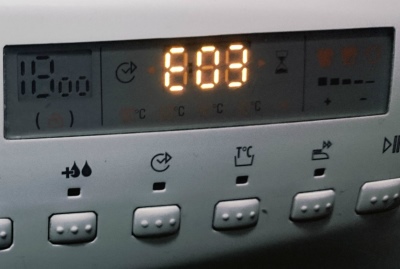
Units without a display have a different warning system for breakdowns and failures.
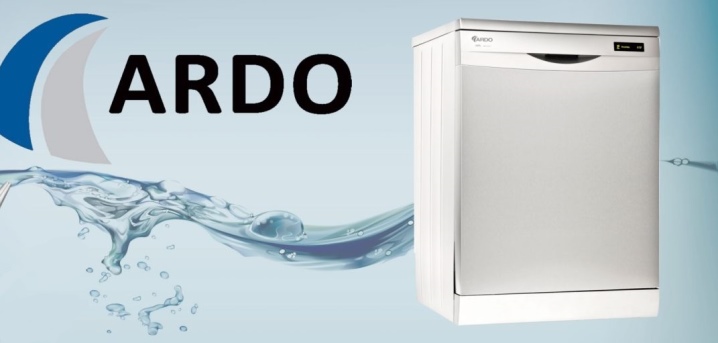
Hotpoint-Ariston is a high-quality and sophisticated dishwasher technology that has problems and malfunctions displayed in code combinations.
- A01 - Activation of the AquaStop system. This indicates possible leaks.
- A02 - an error in the electrical circuit.
- A03 - blocked drain due to time exceeded. A certain time is allotted to drain the dirty water.
- A04 - it takes a long time for water to enter the system. Slow dialing is associated with poor pressure or a blockage in the hose.
- A05 - the temperature sensor does not work. This part not only controls the temperature indicator, but also protects the heating element.
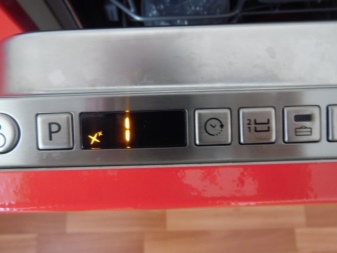
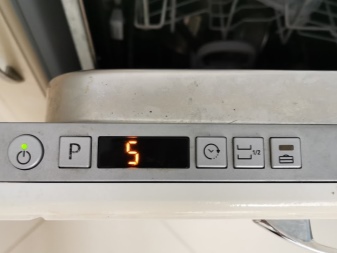
In addition, you may encounter codes such as AL08 (water heats up for a long time), AL09 (software failure), A10 (filling valve malfunction), A12 (water does not reach the desired temperature), A13 (dispenser failed) and A14 ( the drain hose is incorrectly positioned).
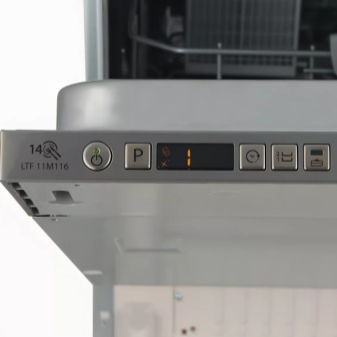
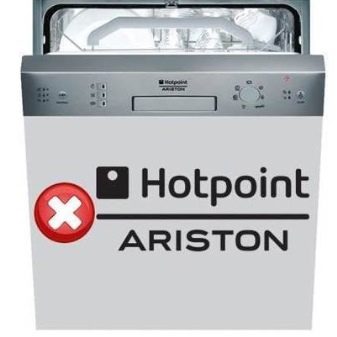
Asko is a premium Swedish product that is characterized by durability, but sometimes there are malfunctions and malfunctions, which are signaled by similar combinations.
- F1 - water does not heat up to the required value. The reason may be a breakdown of one of the temperature sensors or the heating part.
- F2 - turn on the water control sensor. This is due to overfilling the reservoir with water.
- F3 - thermostat worn out. The unit requires diagnostics and replacement of the unusable one with a new one.
- F4 - water does not reach the bunker. The water supply system is interrupted or too low pressure. Sometimes this happens when the parts are heavily clogged (filter, hose).
- F5 - there is a leak. The filler valve is usually leaking.
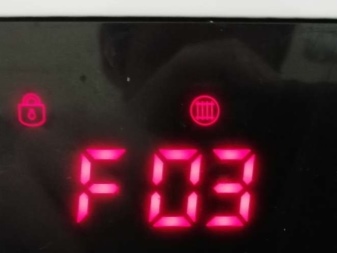

Fault and violation codes F6 (pressure sensor broken), F7 (no drain occurs), F9 (circulation pump broken), FA (turbidity sensor failed) and FB (sprayer malfunctioning) are extremely rare.
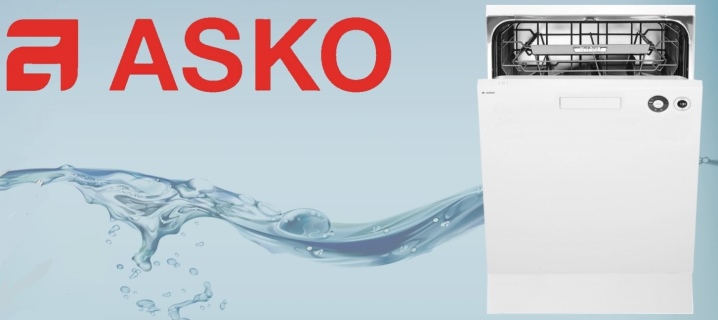
Bauknecht are aggregates with their own error coding program, including:
- F6 / E2 - the tap that is responsible for the water supply is turned off;
- F6 / E7 - low water pressure in pipes;
- F6 / E3 - premature end of the wash cycle, but the dishes remain dirty.
Sometimes the user will encounter an F8 / E1 error indicating clogged filters.
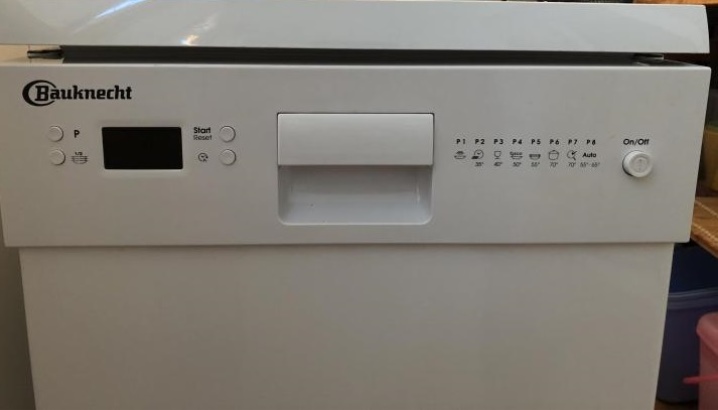
Beko - these are Turkish units, endowed with an excellent self-diagnosis option that instantly identifies problems. On failure, the user is faced with some combinations.
- 0000 - water does not enter the bunker at all. This may be due to a low head, blockage of the system, or a large accumulation of food debris inside the inlet hose.
- 000 - no water heating. This was caused by a breakdown of the part responsible for heating, or wear of the measuring device.
Less common combinations are H1, H2, H3, H4, H5, H6, and H7.
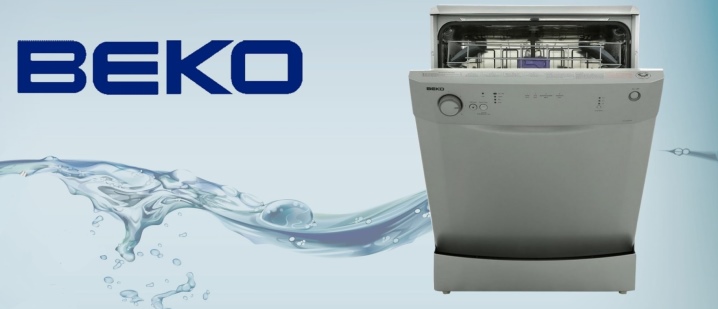
Bomann - these are German-built modules with a diagnostic program, determining all breakdowns and converting them into error codes.
- E1 - problem with water entering the bunker. This is due to a blockage in the hose or filter.
- E4 - presence of leaks or overfilling of the bunker with water. The reasons are different: from a banal blockage to a pump breakdown.
It is extremely rare for the control valves to break, which is indicated by the combination on the E8 screen.
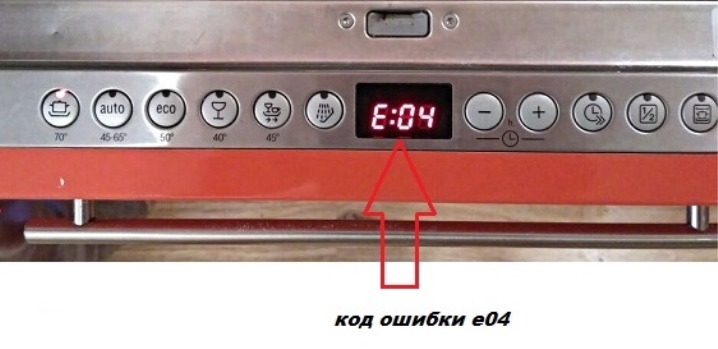
Brandt - these are units that rarely fail, however, in case of a failure, autodiagnostics is triggered, which, as a result, gives an error code E1.This combination indicates poor water supply to the hopper. Possible causes include a blockage in the water supply hose and a weak pressure in the system.
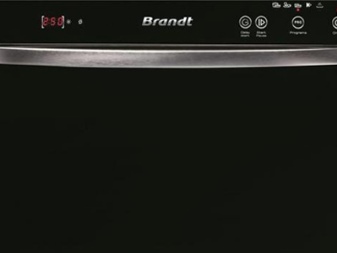
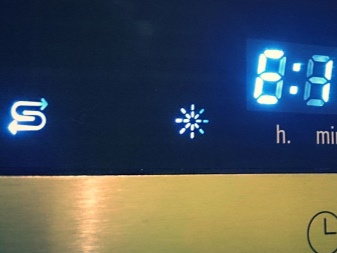
Candy - these are reliable and easy-to-use modules that sometimes work incorrectly, what the codes on the screen signal:
- E1 - difficulties with water filling;
- E2 - full drain is not performed;
- E3 - water is not gaining enough temperature;
- E4 - activation of the AquaStop system, indicating a leak.
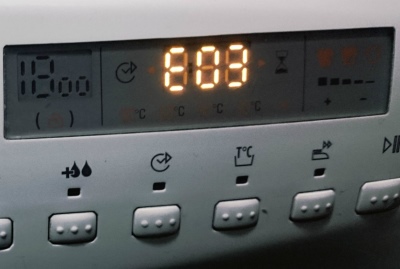
More rarely, the E5 code appears, indicating a breakdown of the temperature sensor, which is possible due to a short circuit.
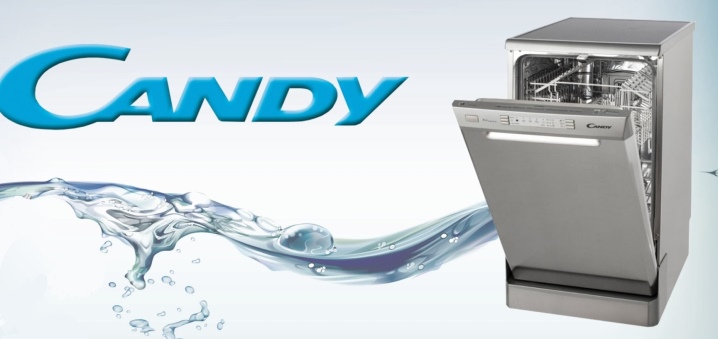













The comment was sent successfully.